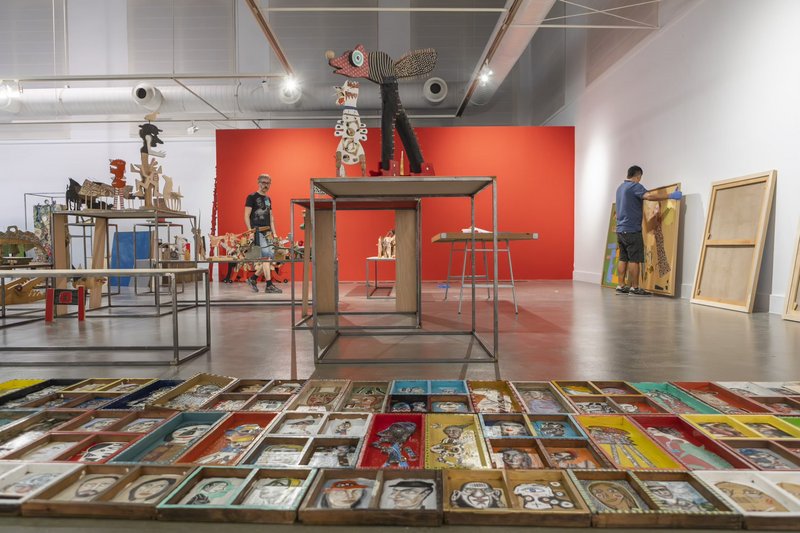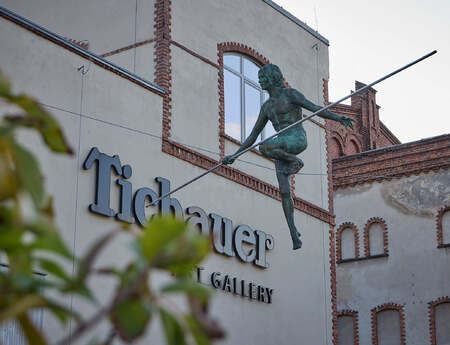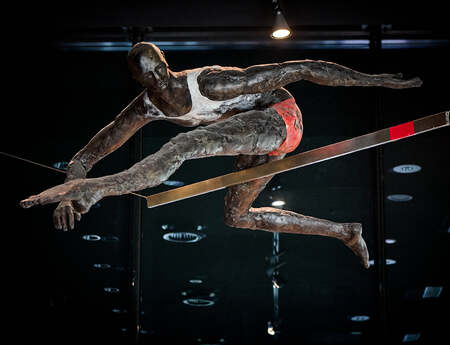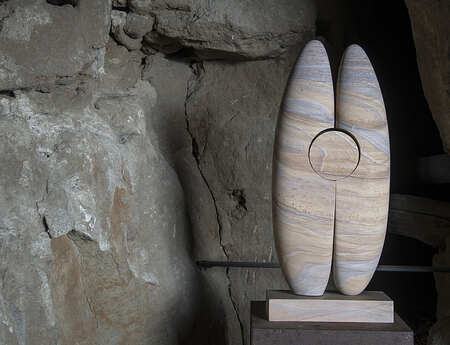Carlos Baonza
Sala Amós Salvador
C. Once de Junio, 4
26001 Logroño
Spanien
Carlos Baonza: Qué con qué
Engraving- sculpture- painting- instalation
Carlos Baonza was born in Madrid in 1957 and is a painter, engraver and sculptor. He studied pedagogy and has dedicated most of his life to children's education.
He began his artistic activity in a self-taught way while maintaining a relationship with other established artists. Baonza learned the techniques of engraving and printing in the workshop of the renowned Greek master Dimitri Papagueorguiu, with whom he cultivated a close friendship until his death.
He was part of a group of artists and poets around José Hierro and exhibited for the first time in 1979 at the University of Comillas (Madrid). Since then he has had numerous solo and group exhibitions, performances and installations in Spain, Austria (Tyrol), Germany and Italy. He has also published numerous books with his work in publishers such as Pepitas and Siruela.
In 1960 Carlos Baonza's father, taking Friedrich Fröbel's pedagogy as a reference, founded a Kindergarten in Madrid, which Carlos ended up taking charge of. A space in which, through playfulness, sensitivity, observation, imagination and fantasy, the established academic limits were broken.
When in 2015, after almost forty years, the adventure of the school ended, Carlos Baonza -he says so himself- found it very hard to re-enter the world of adults and even today his incomprehension of that world is made manifest in many of his works.
Since then, he has been fully dedicated to visual plastic art and works mainly in his studio in Bustarviejo (Madrid).
Why What with what?
One afternoon I was in the workshop working on some automatons and with me was Solete, then a girl of four or five years old, today an eminent ophthalmologist. I was trying to build some useless machines on metal cubes: I was drilling, screwing, welding with a blowtorch and chaining objects with wires and rods, taking advantage of the movement produced by a small electric motor. I moved around looking for elements and experimented with incorporating them into this kinetic construction. I would put it to work and sit with Solete to observe the progress. I did this many times and, on one occasion, Solete said to me: “And now, Carlitos, what with what?
It was a question, the same one that accompanies a creative process that invites to look for an association of objects, of ideas to reach something, to obtain an original result. That question, which always underlies the dynamics of my work, is a continuous provocation that drives me in any project I undertake. It is a battle cry that leads me sometimes to start and sometimes to continue the process of creation. What with what?
Later will come the how and the what for..., but that is another story. In art, creating requires an exercise of sensitivity, concentration, constancy, dedication and work, to which many other things are added.



